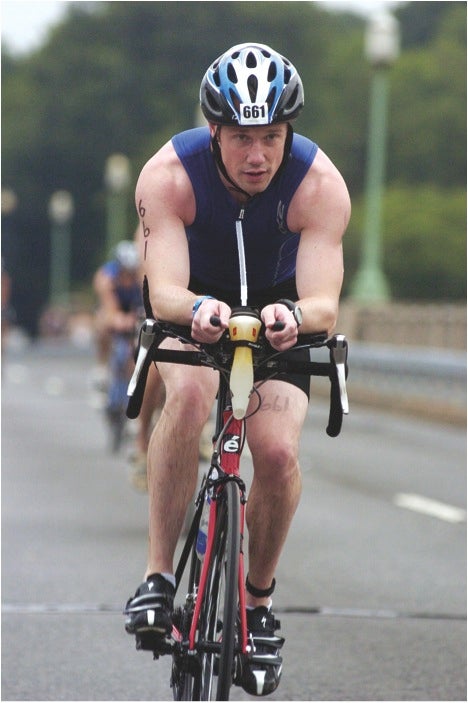My Day On A Plate: Fuel For Longer Distances

Professional triathlete and nutritionist Pip Taylor digs into a reader’s food diary and offers advice for eating, performing and feeling your best.
John Taberski
Age: 34
Hometown: Washington, D.C.
Years In Tri: 4
Occupation: Federal probation officer
Best Tri Accomplishment: Completing the Luray Double—an international-distance race on Saturday, followed by a sprint-distance race on Sunday.
Coveted Tri Goal: Achieve personal best times in sprint and Olympic races this year, and complete my first half-iron-distance at the Musselman in Geneva, N.Y.
Nutrition Vitals: I am 5-foot-10 and weigh 152 pounds in race shape. I try to stay hydrated throughout the day by drinking water throughout the morning and afternoon. My energy level feels fine, and I want to ensure it stays that way as I increase training volume in preparation for Musselman.
My Day
6 A.M. Wake up (and feed our 3-month-old)
7 A.M. Large coffee and bagel with cream cheese
9:30 A.M. Banana
11:30 A.M. Lunch of a salad with grilled chicken, shredded mozzarella cheese, tomatoes, mushrooms and low-fat dressing; 100-calorie yogurt with granola
2 P.M. Handful of mixed nuts
4 P.M. Peanut butter and jelly sandwich on white bread
5 P.M. Workout: One-hour interval session on the bike trainer followed by consuming water and/or electrolyte-rich energy drink
6:30 P.M. Dinner of grilled salmon, with mixed vegetables or mashed potatoes
Pip’s Take:
Stepping up your race distance (and corresponding training volume) requires some nutritional planning to ensure your energy needs are met. Increased training can often be accompanied by an increase in weight unless you pay careful attention to nutrition. As you increase your volume, your hunger increases to above what your actual energy output is—making you feel as though you really need that extra brownie (or three). Also, tiredness can ramp up your body’s hunger signals without any actual need for more calories. Increased demand on your body also means that your immune system has to work harder, so it’s important to give it proper nutrients.
Keep these things in mind to properly fuel your training, work and looking after an infant. Here are a couple of tweaks I’d make to your current diet:
Boost your nutrient density. Meet your increased energy needs by eating fruits and vegetables rich in antioxidants and essential vitamins and minerals. Refined carbohydrates, such as white breads and bagels, don’t add much in the way of nutrients. So instead of a white bread PB&J as your pre-workout snack, consider a piece of fruit with some almond butter, or a fruit salad with yogurt. Start your day with some protein-rich eggs and add nutrient-dense vegetables such as spinach, tomatoes and mushrooms to keep you feeling full throughout the morning. For lunch, stick with a big salad and grilled chicken but ditch the low-fat dressing for olive oil and balsamic vinegar. Olive oil is rich in healthy fats that will help you absorb and utilize nutrients in the salad. You’re spot on with your choice of salmon for dinner—it’s rich in omega-3 fatty acids to help you recover from tough workouts.
Consume most carbs before, during or after training. To ensure you maximize your workouts and recovery without adding unnecessary calories, eat carbs close to workouts and eat healthy fats, proteins and non-starchy vegetables during less active times. This will help you stabilize blood sugar and energy levels throughout the day.
RELATED – My Day On A Plate: Triathlete/Firefighter Caldwell Clarke